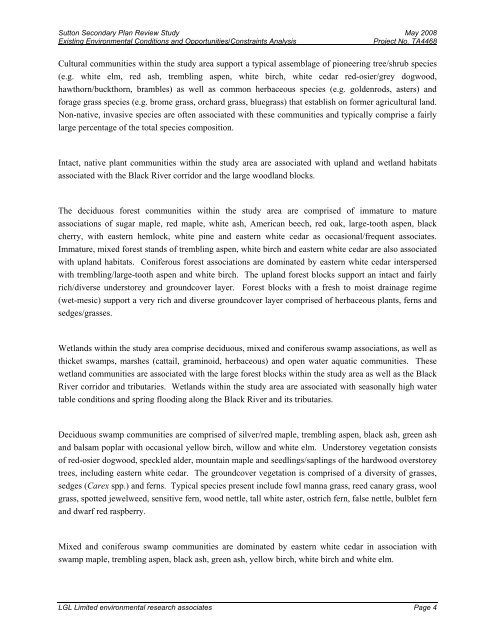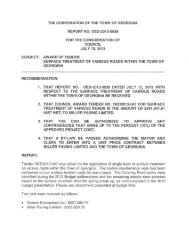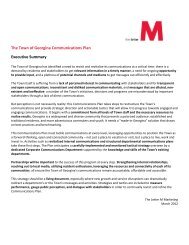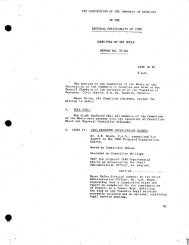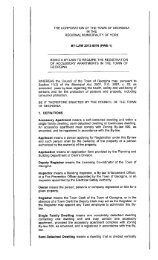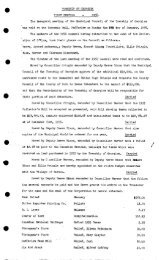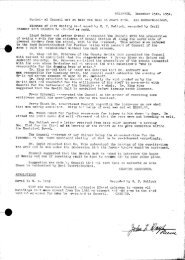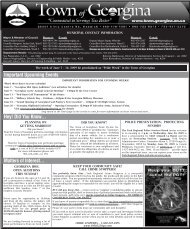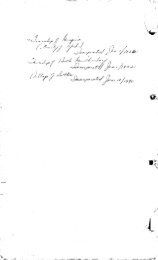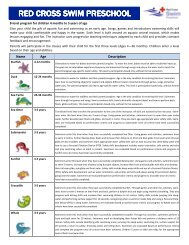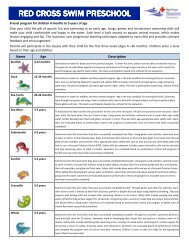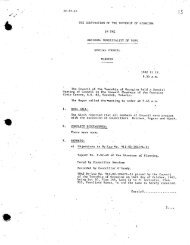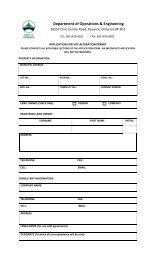Background Report - Town of Georgina
Background Report - Town of Georgina
Background Report - Town of Georgina
Create successful ePaper yourself
Turn your PDF publications into a flip-book with our unique Google optimized e-Paper software.
Sutton Secondary Plan Review Study May 2008<br />
Existing Environmental Conditions and Opportunities/Constraints Analysis<br />
Project No. TA4468<br />
Cultural communities within the study area support a typical assemblage <strong>of</strong> pioneering tree/shrub species<br />
(e.g. white elm, red ash, trembling aspen, white birch, white cedar red-osier/grey dogwood,<br />
hawthorn/buckthorn, brambles) as well as common herbaceous species (e.g. goldenrods, asters) and<br />
forage grass species (e.g. brome grass, orchard grass, bluegrass) that establish on former agricultural land.<br />
Non-native, invasive species are <strong>of</strong>ten associated with these communities and typically comprise a fairly<br />
large percentage <strong>of</strong> the total species composition.<br />
Intact, native plant communities within the study area are associated with upland and wetland habitats<br />
associated with the Black River corridor and the large woodland blocks.<br />
The deciduous forest communities within the study area are comprised <strong>of</strong> immature to mature<br />
associations <strong>of</strong> sugar maple, red maple, white ash, American beech, red oak, large-tooth aspen, black<br />
cherry, with eastern hemlock, white pine and eastern white cedar as occasional/frequent associates.<br />
Immature, mixed forest stands <strong>of</strong> trembling aspen, white birch and eastern white cedar are also associated<br />
with upland habitats. Coniferous forest associations are dominated by eastern white cedar interspersed<br />
with trembling/large-tooth aspen and white birch. The upland forest blocks support an intact and fairly<br />
rich/diverse understorey and groundcover layer. Forest blocks with a fresh to moist drainage regime<br />
(wet-mesic) support a very rich and diverse groundcover layer comprised <strong>of</strong> herbaceous plants, ferns and<br />
sedges/grasses.<br />
Wetlands within the study area comprise deciduous, mixed and coniferous swamp associations, as well as<br />
thicket swamps, marshes (cattail, graminoid, herbaceous) and open water aquatic communities. These<br />
wetland communities are associated with the large forest blocks within the study area as well as the Black<br />
River corridor and tributaries. Wetlands within the study area are associated with seasonally high water<br />
table conditions and spring flooding along the Black River and its tributaries.<br />
Deciduous swamp communities are comprised <strong>of</strong> silver/red maple, trembling aspen, black ash, green ash<br />
and balsam poplar with occasional yellow birch, willow and white elm. Understorey vegetation consists<br />
<strong>of</strong> red-osier dogwood, speckled alder, mountain maple and seedlings/saplings <strong>of</strong> the hardwood overstorey<br />
trees, including eastern white cedar. The groundcover vegetation is comprised <strong>of</strong> a diversity <strong>of</strong> grasses,<br />
sedges (Carex spp.) and ferns. Typical species present include fowl manna grass, reed canary grass, wool<br />
grass, spotted jewelweed, sensitive fern, wood nettle, tall white aster, ostrich fern, false nettle, bulblet fern<br />
and dwarf red raspberry.<br />
Mixed and coniferous swamp communities are dominated by eastern white cedar in association with<br />
swamp maple, trembling aspen, black ash, green ash, yellow birch, white birch and white elm.<br />
LGL Limited environmental research associates Page 4


